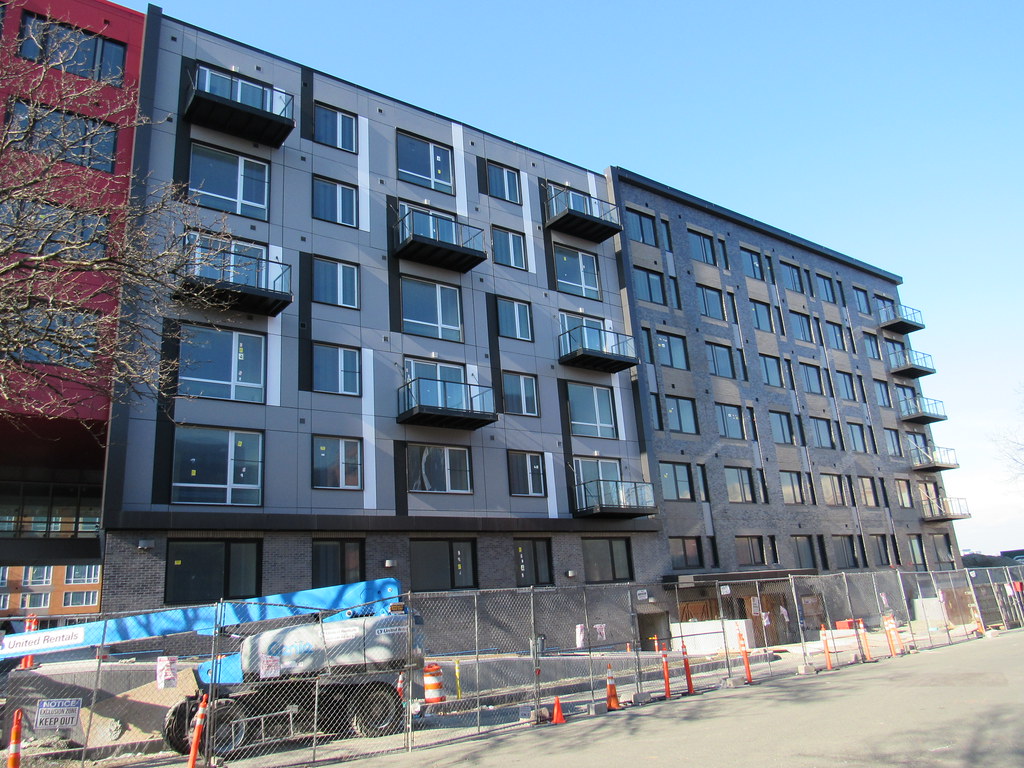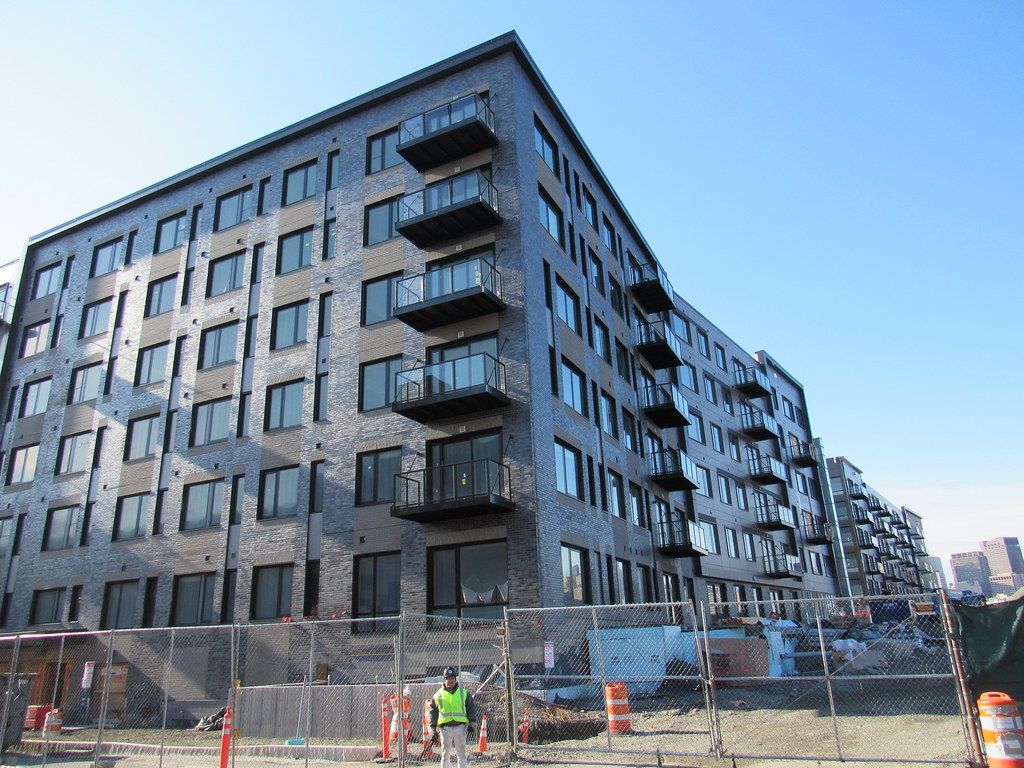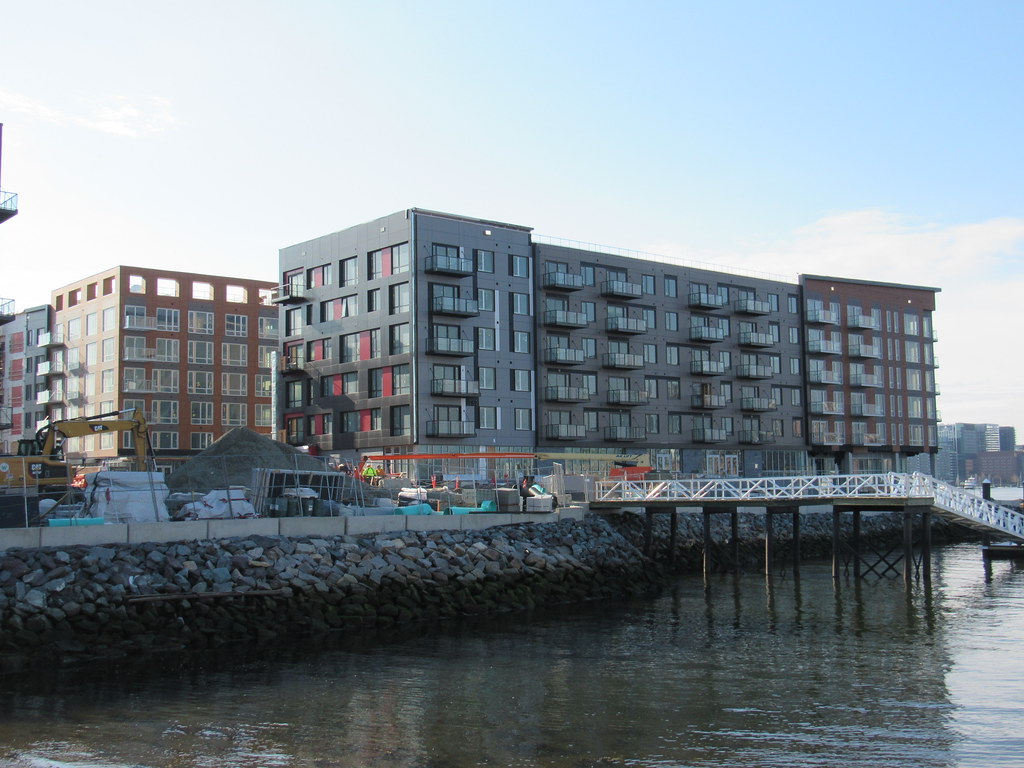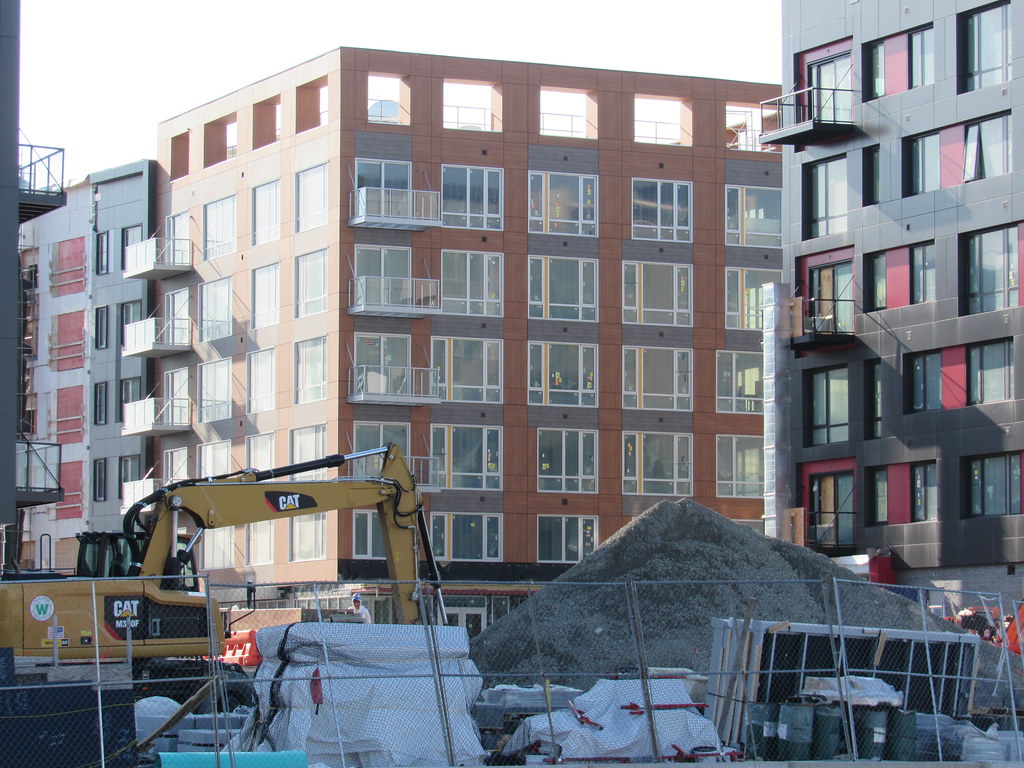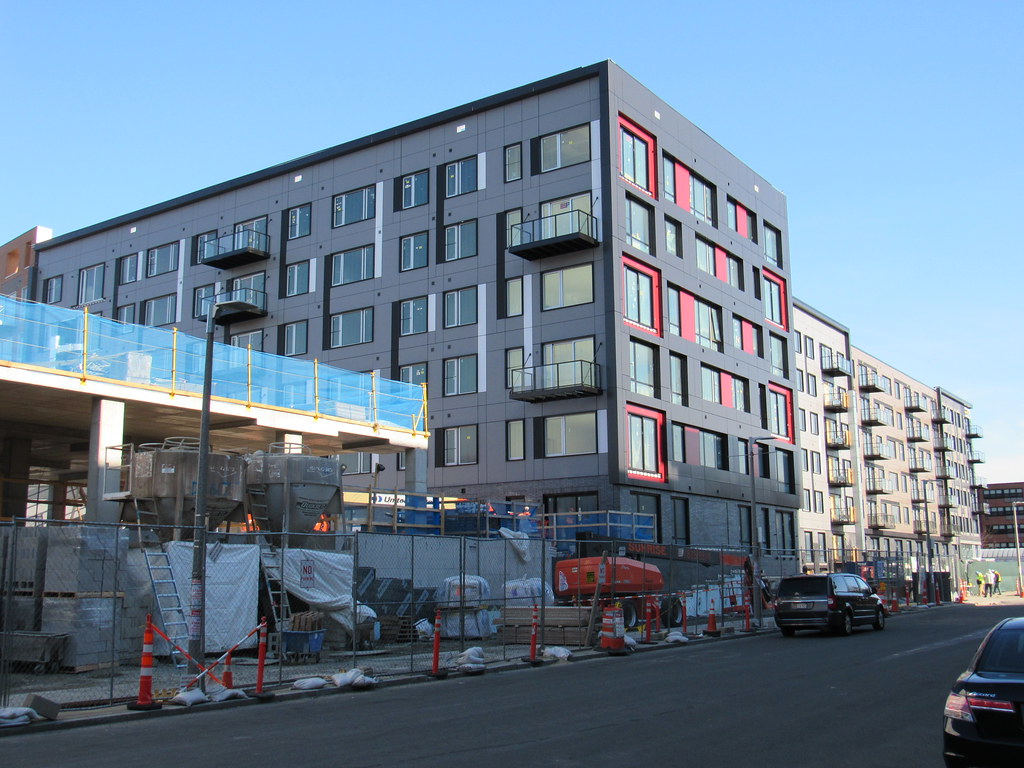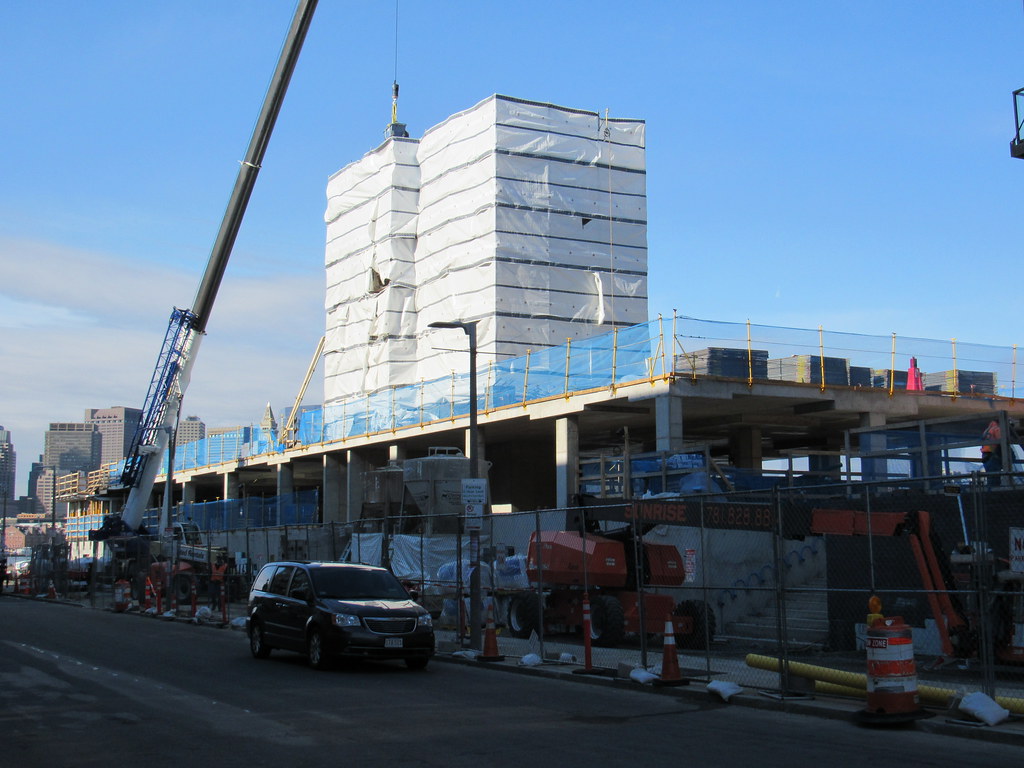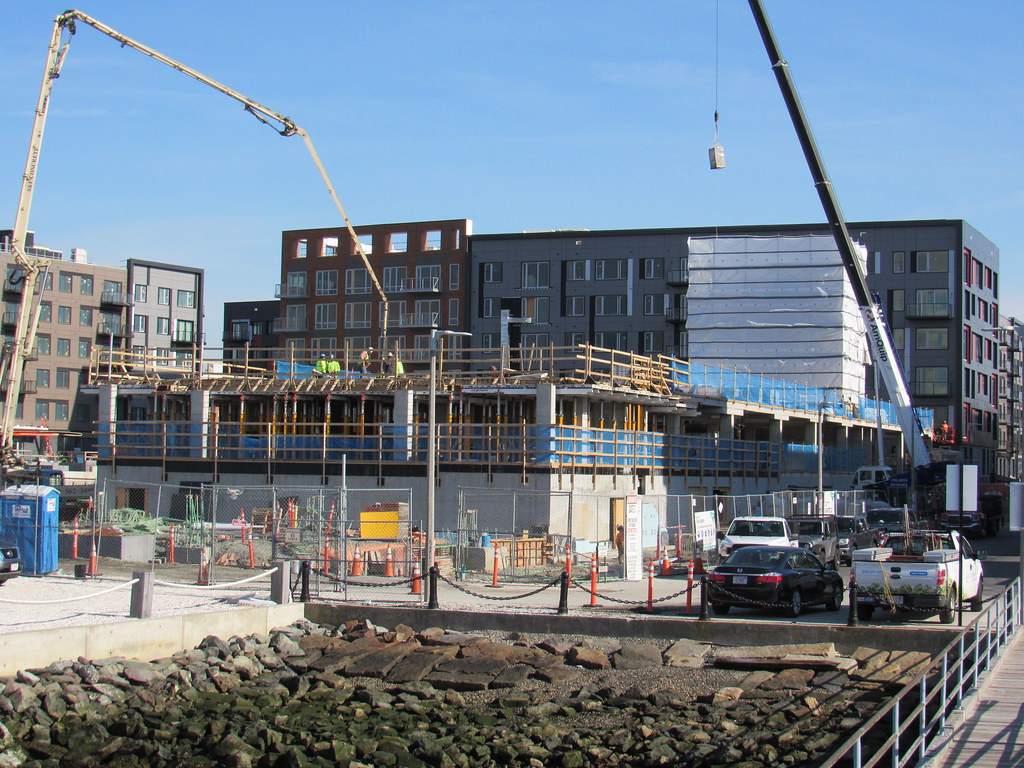Opposition to a project like this reeks of brainless NIMBY dead-enders who want their neighborhood to look like it did in the 1950's. Unfortunately you can't halt progress and I'm curious how many people still in Eastie have lived their for "generations". Like 1% of the population?
You are using an out of date browser. It may not display this or other websites correctly.
You should upgrade or use an alternative browser.
You should upgrade or use an alternative browser.
Clippership Wharf | East Boston
- Thread starter stick n move
- Start date
iamdjmichael
Active Member
- Joined
- Aug 4, 2014
- Messages
- 165
- Reaction score
- 131
Can't argue with any of that, but...
I don't really understand this sentiment. How does this development in any way detract from the lives of the current community? How does it make anyone feel unwelcome? What is wrong with attracting new people to the area? We are discussing what was an abandoned lot on the edge of the neighborhood (though, incredibly, on the harbor and a short walk from the T).
I’ve only been here for exactly two years (live on Frankfort) a couple blocks away, but my biggest issue is that these waterfront buildings don’t really interact with the street and it feels cold which is what I think people mean when they say unwelcoming. The Lewis Mall and Marginal St (Portside) facing sides specifically should have retail and restaurant space or even just breaks on the ground level facade like the Frankfort/Gove project. That would be much more “inviting”.
^ Well....Another interpretation is that it reeks of incumbent landlords (in many cases its people who still own mom and dad's house and rent it out) who don't want new supply to cut into their rents.
And it also reeks of organized renter & resident advocacy, applying pressure as a negotiation tactic to try to shake out neighborhood amenities and rent subsidies.
...both of which are perfectly rational strategies...
(I've found that cynicism has much greater explanatory power than condescension...)
And it also reeks of organized renter & resident advocacy, applying pressure as a negotiation tactic to try to shake out neighborhood amenities and rent subsidies.
...both of which are perfectly rational strategies...
(I've found that cynicism has much greater explanatory power than condescension...)
hmmf....
We're shyttin' on infill now?
That's not my take at all. Then again, i didn't grow up in the Neighborhood.
i wish it could have been done with some taller sections for an appealing 'Assembly Row' look.
or straight, unremarkable, (evil) 1: 1 clone of Assembly Row.
What infill? This is waterfront.
odurandina
Senior Member
- Joined
- Dec 1, 2015
- Messages
- 5,328
- Reaction score
- 265
I’ve only been here for exactly two years (live on Frankfort) a couple blocks away, but my biggest issue is that these waterfront buildings don’t really interact with the street and it feels cold which is what I think people mean when they say unwelcoming. The Lewis Mall and Marginal St (Portside) facing sides specifically should have retail and restaurant space or even just breaks on the ground level facade like the Frankfort/Gove project. That would be much more “inviting”.
How many quality food trucks can line the street wall?
iamdjmichael
Active Member
- Joined
- Aug 4, 2014
- Messages
- 165
- Reaction score
- 131
How many quality food trucks can line the street wall?
Not sure if you’re serious but I’d say a good amount, it could be turned into a cool hangout spot like the area around Downeast and KO in the summer
Beton Brut
Senior Member
- Joined
- May 25, 2006
- Messages
- 4,382
- Reaction score
- 338
When I was a teenager, I cultivated the aura of being misunderstood. It was a sad badge of honor, shaped by David Lynch and Martin Scorsese, Sylvia Plath and Joe Strummer. How times have changed as I march slowly toward the half-century mark. These days, I enjoy being understood, and make no small efforts to that end.
What I knew at sixteen I still know today - I grew up in a dispossessed neighborhood. Anyone with even a casual awareness of Boston history knows that the Commonwealth, beneath the cloak of Massport, has treated East Boston like a cat treats a litter box. People of a certain age and social status still look at me askew when I tell them where I grew up. If I often seem defensive about my community, it’s because I believe it deserves to be defended. Past generations of elected officials were poor advocates, and knowing this, I’ve been raising my voice since I found it, thirty years ago.
So let’s be clear - I’m an informed critic of development, not an opponent of development. I make qualitative assessments based in my knowledge of the community, with a focus on both history and aspiration. The deep and obvious flaws in the waterfront developments in East Boston are the result of a clear and intentional failure to create points of interaction between the established community and new residents of these developments.
As others have suggested, Marginal Street should have become a retail and restaurant corridor, with small, locally owned businesses to attract people of every stripe. Package and hardware stores, dry cleaners, lunch counters, places for neighbors new and old to meet. Instead, there’s a joyless (and craftless) wall that faces Jeffries Point; the developers we’re allowed to monetize the view, and turn their back to the neighborhood.
Clippership Wharf can now join the Eddy, Portside at Pier One, and all the other executive ghettos that have been vomited onto the East Boston Waterfront as a monied enclave that is in East Boston but not of East Boston.
I don’t resent the folks who can afford to live here - if you can fork over $4K a month, good for you. But I do resent the state and city agencies who enabled these developments with nary a consideration for the needs and betterment of the established community. It may be smart growth, given the proximity to transit. It’s certainly profitable, given the crush of well-dressed thirty-somethings flooding the platform at Maverick. But it’s also thoughtless, cynical urbanism.
What I knew at sixteen I still know today - I grew up in a dispossessed neighborhood. Anyone with even a casual awareness of Boston history knows that the Commonwealth, beneath the cloak of Massport, has treated East Boston like a cat treats a litter box. People of a certain age and social status still look at me askew when I tell them where I grew up. If I often seem defensive about my community, it’s because I believe it deserves to be defended. Past generations of elected officials were poor advocates, and knowing this, I’ve been raising my voice since I found it, thirty years ago.
So let’s be clear - I’m an informed critic of development, not an opponent of development. I make qualitative assessments based in my knowledge of the community, with a focus on both history and aspiration. The deep and obvious flaws in the waterfront developments in East Boston are the result of a clear and intentional failure to create points of interaction between the established community and new residents of these developments.
As others have suggested, Marginal Street should have become a retail and restaurant corridor, with small, locally owned businesses to attract people of every stripe. Package and hardware stores, dry cleaners, lunch counters, places for neighbors new and old to meet. Instead, there’s a joyless (and craftless) wall that faces Jeffries Point; the developers we’re allowed to monetize the view, and turn their back to the neighborhood.
Clippership Wharf can now join the Eddy, Portside at Pier One, and all the other executive ghettos that have been vomited onto the East Boston Waterfront as a monied enclave that is in East Boston but not of East Boston.
I don’t resent the folks who can afford to live here - if you can fork over $4K a month, good for you. But I do resent the state and city agencies who enabled these developments with nary a consideration for the needs and betterment of the established community. It may be smart growth, given the proximity to transit. It’s certainly profitable, given the crush of well-dressed thirty-somethings flooding the platform at Maverick. But it’s also thoughtless, cynical urbanism.
Last edited:
FitchburgLine
Active Member
- Joined
- Nov 5, 2013
- Messages
- 666
- Reaction score
- 403
This isn't a claim you can make without evidence. Boston's permit rate fell significantly last year, Chelsea permitted zero units, Cambridge has started one new residential development in the last two years (post IZ increase). It's prima facie obvious that mandating retail would increase building costs in this case, and given that other revenue taxes (which this would effectively be) seem to have quite large effects on #units built, I'm not sure about the tradeoff.As others have suggested, Marginal Street should have become a retail and restaurant corridor, with small, locally owned businesses to attract people of every stripe. Package and hardware stores, dry cleaners, lunch counters, places for neighbors new and old to meet. Instead, there’s a joyless (and craftless) wall that faces Jeffries Point; the developers we’re allowed to monetize the view, and turn their back to the neighborhood.
[...]
It’s certainly profitable, given the crush of well-dressed thirty-somethings flooding the platform at Maverick. But it’s also thoughtless, cynical urbanism.
odurandina
Senior Member
- Joined
- Dec 1, 2015
- Messages
- 5,328
- Reaction score
- 265
if anything retail remains in some type of crisis.
i don't like the 'wallish,' uninviting appearance Back Bay somehow avoids.
https://www.google.com/maps/@42.3597492,-71.0378569,1177a,35y,352.01h,32.52t/data=!3m1!1e3
The area seems perfect for seasonal food vending & drink activity to fill the void.
i don't like the 'wallish,' uninviting appearance Back Bay somehow avoids.
https://www.google.com/maps/@42.3597492,-71.0378569,1177a,35y,352.01h,32.52t/data=!3m1!1e3
The area seems perfect for seasonal food vending & drink activity to fill the void.
Beton Brut
Senior Member
- Joined
- May 25, 2006
- Messages
- 4,382
- Reaction score
- 338
This isn't a claim you can make without evidence.
Do you need to take a swig of off-smelling milk to know it's spoiled? Pardon me for having the temerity to suggest that the situation on the ground is a little different that what one may find in an examination of statistics. People live here -- not numbers.
It's prima facie obvious that mandating retail would increase building costs in this case, and given that other revenue taxes (which this would effectively be) seem to have quite large effects on #units built, I'm not sure about the tradeoff.
I'm not in the business of insuring the profits of developers and their investors. Instead, I'm interested in protecting and enhancing the urban fabric of my neighborhood, with developments that welcome residents across a wide socioeconomic spectrum. The developments up for discussion here are at best, inert objects in an active landscape; at worst, they are a source of socioeconomic erosion and displacement.
I neglected to address this charge:
Opposition to a project like this reeks of brainless NIMBY dead-enders who want their neighborhood to look like it did in the 1950's.
I didn't walk the earth in the 50s, but when I speak to my dad and my older neighbors, it seems to me that East Boston was eminently more livable in the era prior to the expansion of Logan Airport. There's a ton of content online, from oral history projects to videos of the streetcar network that will bear this out.
Unfortunately you can't halt progress and I'm curious how many people still in Eastie have lived their for "generations". Like 1% of the population?
Depending on the street, in my enclave of Orient Heights, the numbers are somewhere between 40% and 60%. Most are owner-occupied multifamily homes.
Beton, some of your claims don't "jive". All I keep reading is how Eastie is a melting pot of immigrants and blah blah blah, not to mention the vast majority of Boston's residents aren't from here, yet in your neighborhood 60% of the residents have been there for generations??? I'll just say I'm skeptical and leave it there.
Beyond that though, your comments are boilerplate NIMBY. Every anti-development person thinks of themselves as a martyr trying to preserve a better way of life from long ago while evil corporations steamroll the good and innocent but helpless residents of neighborhood xxxx.
Shirley Kressel could have written this: "I'm not in the business of insuring the profits of developers and their investors. Instead, I'm interested in protecting and enhancing the urban fabric of my neighborhood, with developments that welcome residents across a wide socioeconomic spectrum. The developments up for discussion here are at best, inert objects in an active landscape; at worst, they are a source of socioeconomic erosion and displacement."
Or this: "it seems to me that East Boston was eminently more livable in the era prior to the expansion of Logan Airport. There's a ton of content online, from oral history projects to videos of the streetcar network that will bear this out. "
Beyond that though, your comments are boilerplate NIMBY. Every anti-development person thinks of themselves as a martyr trying to preserve a better way of life from long ago while evil corporations steamroll the good and innocent but helpless residents of neighborhood xxxx.
Shirley Kressel could have written this: "I'm not in the business of insuring the profits of developers and their investors. Instead, I'm interested in protecting and enhancing the urban fabric of my neighborhood, with developments that welcome residents across a wide socioeconomic spectrum. The developments up for discussion here are at best, inert objects in an active landscape; at worst, they are a source of socioeconomic erosion and displacement."
Or this: "it seems to me that East Boston was eminently more livable in the era prior to the expansion of Logan Airport. There's a ton of content online, from oral history projects to videos of the streetcar network that will bear this out. "
fattony
Senior Member
- Joined
- Jan 28, 2013
- Messages
- 2,099
- Reaction score
- 482
Depending on the street, in my enclave of Orient Heights, the numbers are somewhere between 40% and 60%. Most are owner-occupied multifamily homes.
I would love to see data showing ANY neighborhood of Boston where even 10% of the people were born in Boston, let alone they AND their parents were born here (which I would say is the bare minimum to qualify as "generations"). I doubt you could find even a single street with 10% people born here.
EDIT: Some quick googling found this little number:
East Boston’s non-white population grew from 4% to 50% from 1980 to 2000
so you go ahead and reconcile that with your 40-60% multi-generation fever dream.
odurandina
Senior Member
- Joined
- Dec 1, 2015
- Messages
- 5,328
- Reaction score
- 265
Needham, (founded by my 5X great grandfather) was 326 X more affordable then, compared to when i was a kid.... We had to live in a 3 decker tenement on W. Boylston St in Brookline for a few years. Now, Needham, Brookline and all the towns on the 128 beltway range from borderline unaffordable to impossible for unrich folks like my parents to be bringing up kid today.
Show me how we're gonna fix this without building some new housing units. When you look at Clippership Wharf on the Google imagery, it looks like a decent project in a small corner of a City that has under-built for decades. I'm sure there are design defects we wish had been worked out before building. Cue the violins.
Show me how we're gonna fix this without building some new housing units. When you look at Clippership Wharf on the Google imagery, it looks like a decent project in a small corner of a City that has under-built for decades. I'm sure there are design defects we wish had been worked out before building. Cue the violins.
AmericanFolkLegend
Senior Member
- Joined
- Jun 29, 2009
- Messages
- 2,214
- Reaction score
- 248
Are they at least improving the Harborwalk with all these developments on the water in Eastie?
Beton Brut
Senior Member
- Joined
- May 25, 2006
- Messages
- 4,382
- Reaction score
- 338
All I keep reading is how Eastie is a melting pot of immigrants and blah blah blah, not to mention the vast majority of Boston's residents aren't from here, yet in your neighborhood 60% of the residents have been there for generations???
The Saratoga Street corridor (heading toward Winthrop) and the Bayswater Street area are largely unchanged in the past 25 years. The same could be said about Orient Avenue (that tops the hill above Orient Heights). These are outliers to the significant demographic shifts that have happened elsewhere in East Boston (i.e. Eagle Hill, Maverick Square/Jeffries Point).
...(Y)our comments are boilerplate NIMBY. Every anti-development person thinks of themselves as a martyr...
Well, I was opposed to the form and expression of the waterfront developments, and the lack of retail integration. I remain optimistic about the evolving plans for Suffolk Downs. Traffic and stress on the Blue Line are concerns, but what I've seen from HYM shows they're willing to make real efforts for advocacy and financial investments to back that up. The Commonwealth also has a role to play, and that's the joker in the deck.
I just don't understand the "martyr" thing; my family owns a home in good nick, so we've got nothing to lose (financially). But there are many folks who do, and I find that concerning enough to take action from time to time. Isn't that what you're supposed to do in a civil society?
Shirley Kressel could have written this...
Though I often disagree with her positions about large-scale development downtown, Shirley's a good writer, so thank you.
...so you go ahead and reconcile that with your 40-60% multi-generation fever dream.
I think that our disagreement is the result of a couple of things; my numbers are based on home ownership (not tenancies) and are focused on a couple of enclaves (see above), not the entirety of East Boston.
Are they at least improving the Harborwalk with all these developments on the water in Eastie?
Yes, and it's a good change. The challenge is the atmosphere of the new developments, the need to pass through them to access public space. The street activity generated by a few pockets of integrated retail would soften the "private property - keep out" vibe.
jdrinboston
Active Member
- Joined
- Oct 10, 2011
- Messages
- 672
- Reaction score
- 561
Yes, and it's a good change. The challenge is the atmosphere of the new developments, the need to pass through them to access public space. The street activity generated by a few pockets of integrated retail would soften the "private property - keep out" vibe.
When I was on the waterfront a few weeks ago, this market looked like it was poised to open and based on this Website, the opening will ocurr next Wednesday. This is on the ground floor of the Portside at Pier One building and anchors the corner of the building at the corner of Marginal and Lewis, across from Clippership Wharf.
https://portsidemarketspirits.com/
Beton Brut
Senior Member
- Joined
- May 25, 2006
- Messages
- 4,382
- Reaction score
- 338
^ Interesting. I'll have to poke my head in some evening on my way home. If they're stocking GlenDronach and Allagash, they can't be all bad.
- Joined
- Jan 7, 2012
- Messages
- 14,072
- Reaction score
- 22,813
- Joined
- Jan 7, 2012
- Messages
- 14,072
- Reaction score
- 22,813
- Joined
- May 25, 2006
- Messages
- 7,034
- Reaction score
- 1,875
I hate to say it but this is looking pretty nice. At least it's way better than a lot of similar projects in the rest of Boston.


